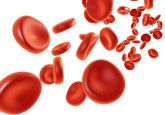NanoPOTS technology developed to monitor cancer by blood sampling

Researchers at the Brigham Young University (London, UK) in collaboration with Pacific Northwest National Laboratory (WA, USA) and Oregon Health & Science University (OR,USA) have developed a new technology to diagnose, monitor and tailor appropriate therapies for various cancers by measuring the proteins in circulating tumor cells (CTCs) in the blood. This technology could avoid the need for biopsies or spinal taps, thereby providing patients with a non-invasive approach to treatment.
In the study, published in Analytical Chemistry, scientists isolated CTCs from the blood and determined which proteins were present using a new technology, termed nanoPOTS. This technique can use sample sizes 500 times smaller than previously possible and is able to isolate proteins from the rest of the sample and feed the material into a mass spectrometer, which separates out and measures each of the hundreds of proteins.
In the past, it was only possible to count CTCs, which would usually correlate with cancer; however, this was not always effective since CTCs are very rare cells. The development of nanoPOTS allows more protein information to be captured from a single cell than ever before, potentially allowing physicians to better understand what is working with a therapy regimen and continue or modify treatment accordingly, based on what proteins are present and at what levels.
Ryan Kelly, Brigham Young University (London, UK), commented: “Targeted approaches for studying proteins from single cells have been around for a while, but the problem is you have to know exactly what you’re looking for. What we are doing is cataloging as many proteins as possible from single cells, without having to pick what we’re looking for beforehand. Nobody’s done that before with small numbers of CTCs.”
In the future, the research team hopes that CTC nanoPOTS may replace current invasive methods of monitoring cancer such as biopsies and spinal taps to serve as a ‘liquid biopsy’ providing information about the tumors from a simple blood test.
Kelly concluded: “We would like to know how a therapy is impacting a cancer without having to do an invasive biopsy every time. We’re excited about the implications this could have in the long run for cancer diagnosis, treatment and the development of new therapeutic approaches.”
Sources: Zhu Y, Clair G, Chrisler WB et al. Proteomic analysis of single mammalian cells enabled by microfluidic nanodroplet sample preparation and ultrasensitive nanoLC‐MS. Angew Chem Int Ed Engl. 57(38), 12370–12374 (2018); www.eurekalert.org/pub_releases/2018-11/byu-roh111918.php; https://news.byu.edu/news/research-offers-hope-simpler-cancer-diagnosis-and-treatment





